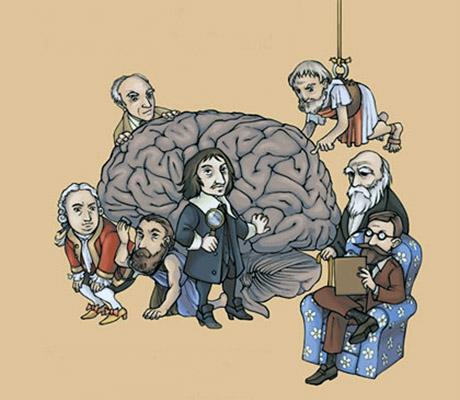Philosophy was among the first disciplines in the humanities to adorn itself with the prefix of “neuro.” Emerging as a branch of analytic philosophy during the 1980s, neurophilosophy has since then attempted to solve philosophical questions with the aid of empirical knowledge acquired in the field of brain research. For example, the sleep laboratory of Finnish philosopher and neuroscientist Antti Revonsuo is investigating the nature of consciousness through dreams. Working at the intersection of dream research and neurophilosophy, Nicolas Langlitz’s anthropological-historical study explores how philosophical questions scholars have wrestled with for centuries are addressed in novel ways through laboratory experiments. His study is part of the “Cerebral Subject” project at the Max Planck Institute for the History of Science and is made possible by funding from the Volkswagen Foundation’s European Platform for the Life Sciences, Mind Sciences, and the Humanities.
When Patricia Churchland published Neurophilosophy in 1986, she differentiated her approach from the philosophy of ordinary language. For instance, Churchland was not interested in what others meant when they spoke of “free will.” Rather, she sought to ascertain whether we possess a free will at all. Like many fin-de-siècle experimental psychologists—at the time, a fifth of all philosophy professorships in Germany were held by this group—Churchland believed that answers to the questions raised by the philosophy of mind were not to be found through armchair contemplation, but instead in scientific laboratories. In lieu of linguistic analysis in the tradition of Wittgenstein, Churchland based her own reflections on investigations in the neurosciences. For Churchland, the mind is the brain.

Fig. 2: Image of the cover of the book by Patricia Churchland: Brain Wise—Studies in Neurophilosophy, published by MIT Press (2002).
This identification of humans with their brains—a subject we are exploring at the Max Planck Institute for the History of Science in the context of our Cerebral Subject project—is closely connected to twentieth-century research on dreams. The discovery during the late 1940s that the human brain is, in electrophysiological terms, highly active during sleep significantly contributed to the view that the brain is not to be understood first and foremost as an organ that responds to external stimuli, but rather as a system that exhibits a high degree of spontaneous activity.
That said, the image put forward in neurophysiological dream research of a homo cerebralis imagining and actively constructing the world was initially rejected by philosophers. In 1956, three years after the groundbreaking correlation of dreaming with rapid eye movement (REM) sleep, ordinary language philosopher Norman Malcolm attempted to explain away Descartes’ dream skepticism as a pseudo-problem resulting from a confusion of ideas. Dismissing the results of sleep research, Malcolm suggested that the brain waves of sleeping subjects could not be associated with dreams, as dreams were nothing more than dream reports—language games in Wittgenstein’s sense. Laboratory studies were therefore described as philosophically irrelevant.
During the 1980s neurophilosophy broke with this tradition of linguistic analysis, with philosophical thinking opening itself anew to the investigation of the mind via natural scientific methods. A renaissance of consciousness research in the 1990s led Finnish philosopher and neuroscientist Antti Revonsuo to assert the dreaming brain as the model of consciousness par excellence. Uncoupled from sensory input and motor output, in this view phenomenal consciousness emerges in pure form—and can as such be empirically investigated in the sleep laboratory. As Revonsuo sees it, the Cartesian mind/body dualism would be refuted if neurophysiological measurements would allow one to reconstruct what a test subject dreams. To date, however, the stalwart monist has not succeeded in determining via electroencephalography (EEG) whether a sleeper in the REM phase attains dream consciousness at all. Revonsuo concedes that he and his team have thus far been unable to refute Descartes.
Although neurophilosophy claims to offer a form of philosophical reflection grounded in empirical knowledge, the interdisciplinary endeavor inevitably operates within a set of assumptions not grounded exclusively in science—not the least of which is the still unproven identity of the brain and the mind, in other words, the very foundations of the entire neurophilosophical project itself. This field research in the anthropology of science examines, among other questions, how those working at the borders of science and philosophy respond to ignorance of their subject. What roles do “theoretical metaphors” play in an empirically-oriented philosophy of the mind? How are science-fiction-like thought experiments used to overcome the limits of scientific knowledge in philosophical arguments? And what happens to philosophical questions once the attempt has been made to “operationalize” them in experiments?
This study carried out at the Max Planck Institute for the History of Science is not based merely on a critical examination of published texts. The methodology extends to include participant observation in a working group of brain researchers and neurophilosophers connected with Revonsuo’s laboratory. This ethnographic study of interdisciplinary interaction focuses on the question of what happens to concepts and research practices when they migrate back and forth across different cultures of knowledge. Insofar as anthropologists of science and neurophilosophers have both abandoned armchairs for laboratories, this cooperation funded by the Volkswagen Foundation also presents us with the opportunity to examine commonalities and differences between anthropological and neurophilosophical laboratory experiences.
